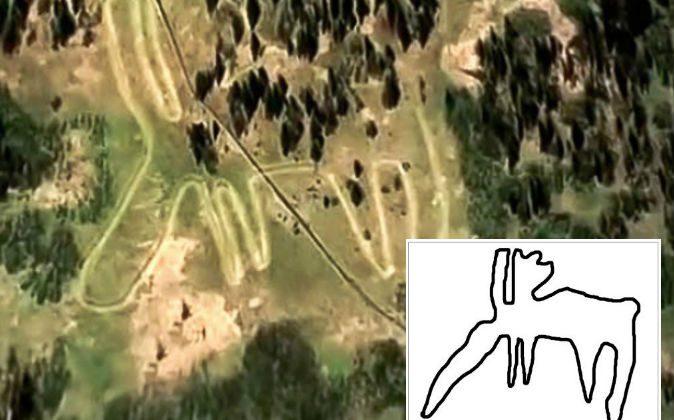From The Siberian Times: New blood samples have been discovered in the remains of a woolly mammoth; experts began the hunt for live cells this month.
The remains of a mammoth found in May 2013 on Malolyakhovskiy Island, Siberia, have yielded new hope for cloning the ancient animal, and also some intriguing puzzles.
One is this: did woolly mammoth blood have a special natural quality that prevented it from freezing, as scientists now suspect? Despite a temperature of minus 10 degrees Celsius (50 degrees Fahrenheit), the blood was liquid.
Another is: why are the mammoth remains in better condition after tens of thousands of years than human remains usually are after six months?
According to Dutch experts from Groningen University, the carcass—preserved in the permafrost in the Sakha Republic (also known as Yakutia)—is some 28,000 years old; tusk analysis shows that this mammoth died between the ages of 57 and 67; the mammoth gave birth no less than nine times.
Rings in the tusk indicate age, as with trees. The calcium content decreases when the animal is pregnant or feeding a calf.
An initial, well-publicized blood sample found from this female mammoth during the excavations at the carcass site is confirmed as genuine—but it has degraded.
However, a new source of blood in the remains was revealed to the The Siberian Times by Semyon Grigoryev, director of the Lazarev Mammoth Museum at Northeastern Federal University in Yakutsk.
“We also have found good blood samples that we obtained during dissection of the left front leg,” he said.

An examination of the blood from these large vessels—which came to light during an autopsy of the remains earlier this year—is due to start soon, he said.
There is hope that this new source of blood will be more significant than the original.
He made it clear: “We have several samples of blood.”
“The first type is a liquid which we got initially during excavations. It really is blood. Our specialists in the Medicine Institute in Yakutsk have very good equipment and found hemoglobin, white blood cells. So it cannot be some other liquid. Of course, over time, it strongly degraded, but the fact is unique and interesting—we found liquid blood.”
In such cold, they had not expected to find any liquid, and the scientists are now seeking to understand any “anti-freeze” qualities of the blood.
Grigoriyev noted interesting questions, such as “How did it manage to stay liquid? Was there some natural anti-freeze in it?”
He explained: “I want to underline that according to histologists, some mammoth tissues are preserved better than those of a man who died months ago. Our common goal is to understand why is the mammoth’s body so well preserved? What helped this? Perhaps some microorganisms, or the environment? Of course, the main cause is that the carcass was in ice and not mummified, but 28,000 years have gone by. So we need to understand which range of factors helped this preservation. Maybe the mammoths had some special properties.”
Work started this month on seeking to identify live cells, he said. Aarhus University and Lund University, as well as institutions in South Korea will conduct further research. Grigoriyev warned against a misconception: “We do not connect big hopes with this blood. Some journalists wrongly wrote that if we found blood, we can clone. This is not so.”
The aim to clone the mammoth has come from South Korean scientists, but Grigoriyev stressed that local Yakutian experts are closely involved in the research, as are specialists from many countries.
“We will search and allocate live cells here, we will work with lots of [biological] material here. There could be nothing there, of course, but if we find some living cells, we will pass the samples to the Koreans and they will work further on cloning.
“We are determined to get the experience and to do a big part of the work by ourselves,” he said.
Geneticist Natalia Oreshkova, of the Siberian Federal University in Krasnoyark, revealed that significant progress has been made in genome sequencing of the woolly mammoth, one of 16 separate directions of research currently underway related to the ancient creature.
“I gathered all the samples that I could—from the trunk, femur, and humerus. We found very good DNA from the humerus, for example,” she told The Siberian Times.
“At the first sight, the DNA seemed good. We isolated rather large fragments. When we started to work with them it turned out that the DNA was very unstable, it started to crumble during our work.”
Despite this, she remains optimistic there will be significant advances as other Russian experts join the research.
“I agreed on cooperation with the Southern Federal University in Rostov-on-Don,” she said. They have good equipment and are rather experienced in working with ancient DNA from bones.
“They have developed methods and qualified staff. We will share our results later. And I think the first results of our work will be announced before the new year.
“In general, it is expected that we will set up the whole mammoth’s genome as a result. Previously there were attempts to set up the mammoth’s genome and mitochondrial DNA too, but we think that given the quality of our material, we can [make it] more complete.”
Scientists earlier said that the blood reveals an unnatural death. The creature was in distress, possibly haven fallen into an ice hole from which she could not escape.
If and when cloning experiments begin, an elephant will be the surrogate mother, enabling the species to be brought back from the dead.
Mammoths disappeared from Siberia at the end of the Pleistocene period some 10,000 years ago under circumstances that are a matter of scientific debate.
Climate change and hunting by humans may have been factors. An isolated population survived on Wrangel Island until around 4,000 years ago.
Republished with permission from The Siberian Times. Read the original.



